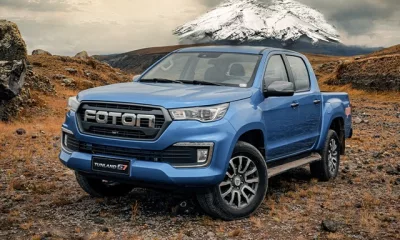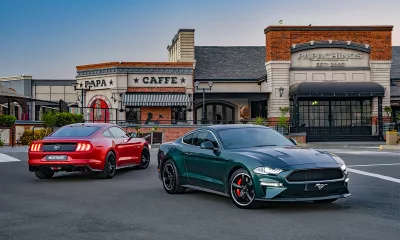
The latest new-vehicle sales data, released by the National Association of Automobile Manufacturers of South Africa (Naamsa), has thrown up a mixed performance for the month of June. Aggregate industry domestic sales for the month improved by 5 006 units (12,6 per cent) to 44 880 vehicles compared with June 2010, but continues to represent a decline in the rate of growth compared with the first quarter of 2011.
Of concern is the year-to-date growth in new-vehicle sales for the first half of 2011 (15,7 per cent), which has ebbed from the growth for the first five months of the year (16,4 per cent), when compared with the same periods last year. Considering the dampened economic outlook for the remainder of the year and the first quarter of 2012, increasing pressure on the industry is expected.
That said, May and June were particularly quiet months for new-vehicle introductions, and most industry commentators remain confident that sales will remain on target to register overall growth in domestic sales of around 15 per cent for 2011.
New-car sales again performed better than expected and at 31 440 units showed an improvement of 17,3 per cent compared with new cars sold during June 2010. The higher sales of new cars over the last 18 months indicate a continued recovery of the demand-side of the economy. The global supply chain has, for the most part, recovered from disruptions by the Japanese tsunami and earthquakes and the market benefits from a low interest rate, improved lending rates from financial institutions, pent up demand as well as a mean decline (in real terms) of new car prices.
The sales performance of new vehicles such as the Chevrolet Captiva and Nissan Micra remain strong and the recent introduction of the Volkswagen Polo saloon and facelifted Honda Accord helped to boost sales. It is also important to note the effect of the facelifted Volkswagen Passat, Peugeot 207 and the new Audi A6 on new-car sales in the latter part of June and July.
Macroeconomic considerations aside, 2011 promises to be a good year, with a raft of new cars that promises to boost sales. The Volkswagen Amarok range has recently been expanded to include four single cab derivatives – this is sure to kick up some dust in the light commercial vehicle (LCV) segment. Other cars to look out for are the new Ford Focus, Hyundai Accent, Kia Optima, Suzuki Kizashi, Tata Aria and the Volkswagen Jetta. Toyota will also introduce a facelifted Hilux and Fortuner very soon. There are some big sellers on this list.
Sticking with LCVs, sales of new light commercials, bakkies and minibuses reflected a decline of 1,8 percent compared with June 2010. But this segment remains buoyant (up 5,1 per cent for the first six months of 2011 compared with the same period during 2010) and the introduction of the new Ford Ranger and Mazda BT-50 (both late-2011) is sure to have a further positive impact.
Sales of vehicles in the medium and heavy commercial segments also reflected a mixed performance: representing a marginal decline for medium commercials and a significant gain of 49,2 per cent for heavy trucks and buses for June 2011 compared with the corresponding period last year. Year-to-date sales for all three segments remains 22,1 per cent up compared with 2010 and continued positive fixed investment associated with infrastructure projects is sure to see this trend continuing.
Exports of SA-built vehicles in June reflected an increase of 4 848 units (23,7 per cent), compared with June 2010. This trend is expected to continue with production and exporting of the new Ford Ranger at Ford’s Struandale plant scheduled to start by September.
However, challenges still remain. Despite a growing economy (the South African economy is expected to achieve a modestly higher growth rate of around 3,8 per cent in 2011), it is unlikely that the global and local macroeconomic environment will remain stable in the medium-term. Rising food, fuel and energy costs will impact negatively on consumer disposable income. The introduction of toll charges in Gauteng will also impact on consumer spending and an increase in the interest rate is expected by year-end or the beginning of 2012. These factors will undoubtedly impact on new-vehicle sales for the remainder of 2011.




